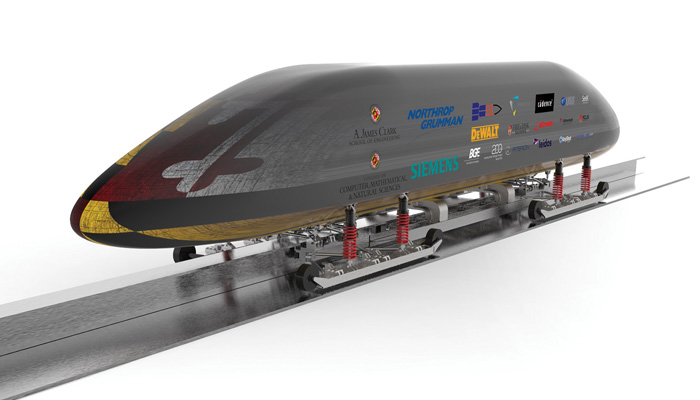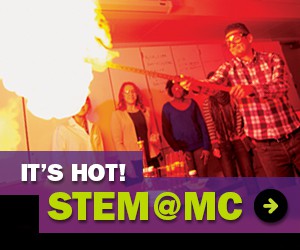Keeping MC in the Loop

Erich Robinson-Tillenburg ’13, Catherine Demmerle ’15, Austin Gerrety ’13, Alla Bliskovsky ’16, and Nicolas Gomez-Bustillo ’15 are part of UMD Loop, a 50-plus member student design that developed Prometheus. Prometheus is a pod designed to carry 20 to 40 people, will be capable of reaching speeds of 220 miles per hour, and utilizes entirely passive magnetic levitation, control, and braking systems. Image courtesy Alla Bliskovsk.

Photos courtesy Alla Bliskovsky.
The competition, at a mile-long test track at SpaceX’s Hawthorne, California, headquarters, requires university students and independent engineering to design and build the best Hyperloop pod. The pods will be judged on run time, safety and reliability, design ingenuity, and scalability. Besides interfacing with other engineers and earning bragging rights among the nations and the world’s top design teams, there is an undisclosed cash prize as well as the “SpaceX experience.”
The UMD Loop team, one of 30 finalists out of 1,200 original entrants, earned a berth in the competition by presenting a 150-page preliminary report on their pod at Design Weekend at Texas A&M University last spring. Competition is stiff, with teams from MIT, University of Wisconsin-Madison, Virginia Tech, and international powerhouses from Delft University of Technology (The Netherlands) and Keiko University (Japan).
The team’s pod, Prometheus, will be a scaled-down version of the vehicle that one day might carry 20 to 40 people. The pod will be capable of reaching speeds of 220 miles per hour. It will utilize entirely passive magnetic levitation, control, and braking systems to complete the one-mile test track in less than thirty seconds!
The team was chartered in June 2015. Robinson-Tillenburg, the team’s president, not only worked on all aspects of the design, including leading individual systems meetings, but also helped garner more than one hundred thousand dollars of support from nearly 20 corporate and university sponsors, including Siemens, Northrop Grumman, and Baltimore Gas and Electric. “The great thing about this team is that everyone involved has learned something new—from machining to various software programs—to help us succeed,” says Robinson-Tillenburg.


